Annual Holiday Round-up
Culture Clashes
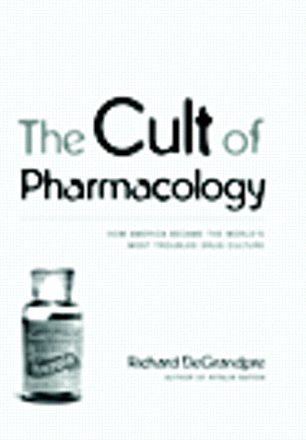
The Cult of Pharmacology, Richard DeGrandpre, Durham, NC: Duke University Press; 2006. 294 pages. $24.95 ISBN-13: 978-0822338819
Some believe “cult” is a four-letter word describing a group of people devoted to beliefs that you dislike. DeGrandpre’s selection of this word in his title is no accident, and it forces you to consider whether you are part of a “cult.” His focus is on psychoactive substances and his overall thesis is that society, the government, and “the medicopharmaceutical industrial complex” hijacked pharmacology during the last century to justify policy and profits. DeGrandpre has popularized the concept of “pharmacologicalism” defined as “an ideological system rooted in the assumption…that pharmacological potentialities contained within the drug’s chemical structure determine drug outcomes in the body, the brain, and behavior.” He further posits that pharmacologicalisms provided “a scientific foundation for the moral ordering of drugs, which then allowed for a disparate, compartmentalized treatment of them” as angels or demons. This is heavy stuff for the holiday season.
The book begins with a detailed analysis and comparison of methylphenidate (Ritalin®) and cocaine, which will not surprise readers of his previous book Ritalin Nation. Other chapters cover selective serotonin reuptake inhibitor (SSRIs), tobacco, opiates, marijuana, benzodiazepines, barbiturates, stimulants, and other psychoactive agents. The author generally uses a third person approach when the message really seems to be first person. This scholarly tone is further fortified by an extensive reference list, which is helpful to the serious or causal reader despite the occasional absence of journal title or pagination that would make a copy editor cringe.
If you want to provoke the thoughts of fellow scientists, students, or friends this holiday season, The Cult of Pharmacology would be a good choice. In the final chapter, called “Ideology,” the author compares pharmacologicalism with nazism and suggests the discipline of pharmacology, when it absorbed the study of psychoactive drugs, was “not equipped to grapple with the powerful dialect that existed between drugs, their users, and the historical and immediate context of use.” One wonders if this opinion may be a vision through the narrow eyes of a psychopharmacologist. Pharmacologists studying agents for abortion, AIDS, or birth control faced analogous controversies. So maybe DeGrandpre’s thesis is more general: The question is whether pharmacologists are a part of a scientific cult or part of the societal culture.
—John Lazo
The Secret of the Cheshire Cat’s Smile
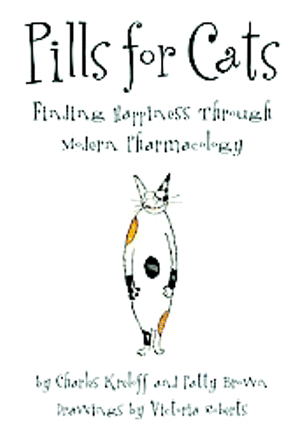
Pills for Cats: Finding Happiness Through Modern Pharmacology, Charles Kreloff and Patty Brown; illustrations by Victoria Roberts New York: Simon & Schuster; 2003. 64 pages. $10.95 ISBN-13: 978-0743261173
How exciting to find a book that combines my vocation (pharmacology) and my avocation (being owned by two cats)! The book is the “tale of one very neurotic, anxious, depressed, unfocused, sleep-deprived cat who discovers the joys of medication,” as told with cartoons and text in a funky font. The cartoons are cute, and the minimalist text tries to convey the therapeutic effects of various behavior-modifying medication. But the price tag is pretty steep for a book that has fewer words than this review. Still, if you need a stocking stuffer for a cat-loving pharmacologist, this might do the trick.
Thus with a Kiss I Die
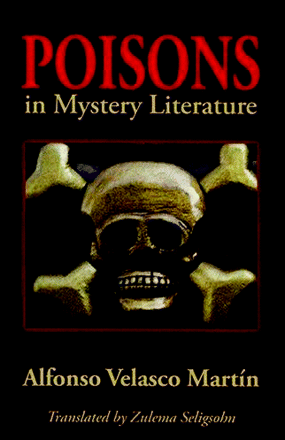
Poisons in Mystery Literature, Alfonso Velasco Martín (translated by Zulema Seligsohn) Scottsdale, AZ: Poisoned Pen Press; 2006. 150 pages. $14.95 ISBN-13: 978-1590583401
Professor Martín is Chair of Pharmacology at the University of Valladolid School of Medicine in Spain. He is an avid reader of mystery books and has read the complete works of virtually all of the best-known mystery writers: Christie, Doyle, Sayers, Chesterton, Hammett, Hocking, and Chandler, to name a few. All of these writers use poisons as the method of murder on more than one occasion. Combining his interest in toxicology and love of mystery novels, Martín has produced this slim volume which he readily claims is a “scientific work, not merely a popularization.” The result is somewhat uneven. The first chapter, “Introduction to Toxicology,” is a quick clinical tour of the definitions in toxicology as well as descriptions of the symptoms and treatments for poisoning. Chapter 2, “Concept and Historical Evolution of the Mystery Novel,” addresses the history of the crime novel. Chapter 3, “Poisons in Crime Literature,” actually gets to the meat of the title. The author describes passages from various mystery novels where poisons have been used, and relates the passages to the clinical effects of the poison employed. This is by far the most interesting chapter, especially if you have read Agatha Christie. Unfortunately, these entertaining passages are frequently interspersed with dry didactic passages on tolerance, dependency, etc. Chapter 4, “Characteristics of the Poisons Employed by the Main Writers of Mystery Novels,” is an encyclopedic listing of poisons, their effects, their treatment, and examples of various mystery novels in which they were used. This might actually be a good adjunct to a clinical toxicology course that would grab students’ attention. As a reference to refer to when reading a mystery novel involving poisons, it is excellent. As a book to curl up with for an enjoyable read on its own, it falls a bit flat.
—Christie Carrico
A Thing of Beauty Is a Joy Forever
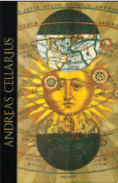
Harmonia Macrocosmica, Andreas Cellarius, introduction and annotation by Robert H. Van Gent Köln: Taschen; 2006. 240 pages. $125.00 ISBN-13: 978-3822852903
Coffee table books. They’re either loved or abhorred. Too big to ignore, like the elephant in the room, they do garner the occasional glance before habituation, as when we judge the pachyderm harmless. The trick to creating a good coffee table book is to seduce the skeptical passer-by. The inviting cover that foretells a feast for the eyes. The come-on that promises the time spent will be repaid multiply. Books such as Earth From Above by Yann Arthus-Bertrand or photographic retrospectives to the work of Cartier-Bresson, Doisneau, or Man Ray certainly fall into this coveted category.
Consider, then, your time well-spent and collect your dividends from Andreas Cellarius, a seventeenth century Dutch cosmographer, who collected maps of our solar system as conceived (or manipulated) by Copernicus, Ptolemy, Brahe, and others. Exquisite drawings and engravings of planetary motion and the constellations abound. Cupids and heavenly host inhabit the margins on many of the maps. This reprint of Cellarius’s book is generously added to by Robert van Gent, who “summariz[es] the history of celestial cartography from antiquity to the late seventeenth–early eighteenth centuries and illuminat[es] the life and work of Andreas Cellarius. Van Gent also discusses the historical and cultural context and significance of the atlas and provides detailed descriptions of the astronomical and iconographical content of the plates, allowing modern readers to fully appreciate the masterwork of Andreas Cellarius….” The illustrations in the book have often appeared on postcards and in calendars, but there is no fear of finding cliché in the otherwise jaded eye; the magnificent double-folio maps are breathtaking. Here is nothing less than the reverence of art for science. When scientific endeavor reaps knowledge, furthering our mastery of the heavens and earth, mankind in its ecstasy repays the debt through works of the finest artistry. — John Nelson
The Burden of Responsibility—The Blessing of Experience
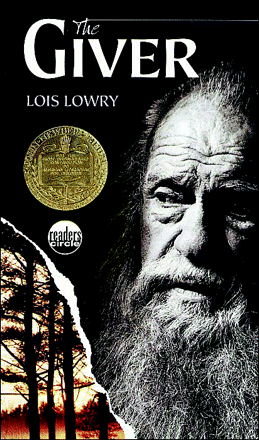
The Giver, Lois Lowry, New York: Laurel Leaf Books; 2002. 192 pages. $6.50 ISBN-13: 978-0440237686
Not so much a book touching on science for children, this novel, nonetheless, is a classic. It is yours to discover for the first time and to share with a child of some maturity.
Jonas lives in a community where everything is chosen for him—therefore making his life perfect. Or is it? He and friends are isolated from others in surrounding communities. Their world has no color, no memories from the time before the community was turned to “Sameness.” All that is changed for Jonas when he is appointed as the new “Receiver”—the receiver of collective memories. In this way, the Receiver acts as a sage in case there are instances where decisions must be made that would be aided by memories from before the time of Sameness. When children become Twelves (twelve years of age), they are given jobs. As the only Receiver, Jonas is given memories that are transported from the elderly Receiver, now the “Giver.” He is given memories of war, love, Christmas, and sunburn, and lives through the experiences that each memory bestows. Jonas endures much pain in his work and then he decides to run away because the Giver and he devised a plan—which is left for you to discover. What happens next is left unclear, but Jonas learns of the responsibility that comes from holding the collective memories.
—Samantha Nelson
- © American Society for Pharmacology and Experimental Theraputics 2007



